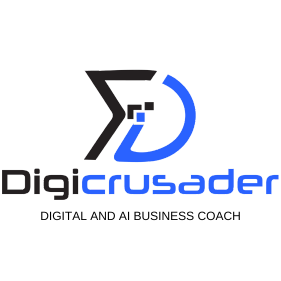AI is no longer merely a buzzword today. It has entered into the everyday functioning of a modern business, from the automation of routine chores and mind-numbing routine jobs to a decision that is more or less based on the latest data available. One area where AI is rapidly improving is the Human Resources (HR) sector. While historically, HR meant a system of managing hiring and staff administration along with monotonous work, nowadays, it embraces AI to not just automate its operations and enhance productivity but also assist the organization in strategic decision-making.
AI in Human Resources Decoded
The article exemplifies how AI in HR is changing the future of work—particularly focusing on these four areas: key areas in AI-powered recruitment, AI-driven talent management, employee engagement, workplace automation, and challenges and future prospects for AI in HR.
1. AI in Recruitment: Speed Up, Fair Deal, Efficiency to Hire
This is exhaustive and time-consuming work simply because recruitment teams are headed by a multitude of applications to be processed. And that is where the AI recruitment tool steps in and changes the very face of hiring, deploying machine learning algorithms which screen resumes, schedule interviews, and even carry out initial assessments.
Here’s how AI is changing recruitment:
- Screening: Applicant tracking systems HireVue and Pymetrics filter out resumes that don’t even deserve a glance, then flag the best candidate for any type of job requirement.
- Interview scheduling: of candidates is taken care of by the chatbots and scheduling assistants like XOR which takes care of all the logistics about getting the candidate to the interview without losing hours to the recruiter.
- Candidate screening: PredictiveHire uses natural language processing and ML algorithms that screen through an applicant’s soft skills and predict the potential of their success.
Artificial Intelligence Hiring Tools Examples
- HireVue: This software enables rating the performance of a candidate interview using AI video analytics to aid recruiters in making faster decisions.

- Pricing: $35 per interview
- Website: hirevue.com
- Pymetrics: Neuroscience games are integrated to match candidates with their dream job using cognitive and emotional attributes.

- Pricing: Custom quotes available
- Website: pymetrics.ai
- PredictiveHire: Predicts suitability of candidates for jobs through a careful analysis of their answers on interview questions using machine learning.

- Pricing: Custom pricing available
- Website: predictivehire.com
AI recruitment tools not only save the time taken to hire but also reduce human bias; decisions are made purely on data and not on people’s preference and fancies.
2. AI for Employee Engagement: Work Experience Upgrade
Employee engagement forms one of the most important success factors for a company. Engaged employees are unlikely to quit and work less productively, while disengaged employees can indeed damage the overall morale at work. AI addresses this issue by providing insights into the sentiment of employees and urging HR teams to bring more successful engagement strategies.
How AI can help
- Real-time feedback: AI-driven tools like Peakon collect continuous and actionable feedback from employees to improve the workplace environment through insight for the HR manager.
- Sentiment analysis: AI-driven tools like CultureAmp use natural language processing to analyze the comments of the employees and make an overall assessment regarding the satisfaction level.
- Personalized experiences: AI can provide the employees with more personalized experiences since it can give them custom-made recommendations related to career development, work-life balance, among many other things.
Best AI Employee Engagement Tools:
- Peakon: Real-time employee’s sentiment analysis and engagement analysis, continuous feedback surveys.

- Pricing: Custom pricing quote on request
- Website: peakon.com
- CultureAmp: Gives recommendations on developing a better workplace culture; a tool for engaging data on employee engagement and uses AI.

- Pricing: $4 per user monthly
- Website: cultureamp.com
To track the real-time levels of engagement, so as to respond quickly to any problems the employee may face, and at a general retention level using AI has become absolutely indispensable for HR in these times where employees can be viewed as their greatest resource—a place from where employee experience becomes the crucial factor for retention.
3. AI-Based Talent Management: Building a Smarter Workplace
Talents management does not stand only for recruitment but pertains to the development and grooming at every step of their career journey. AI is backing HR teams to effectively manage talent by laying out high potentials, formulating relevant development plans, and keeping tracks of performance of all employees.
Some of the significant advantages of AI-managed talent management are as mentioned below:
- Performance tracking: The AI tools assess the employee data over time to find patterns of work performance, which can then be used to support the HR departments in making appropriate decisions in case an employee has to be promoted or grow further in his career.
- Personalized development: Sites such as Cornerstone OnDemand render AI-driven recommendations for any employee learning and development program tailored based on individual needs as well as career goals.
- Talent forecasting: Algorithms will use this information to predict some future talent needs, thus guiding the HR team in planning for changes in their workforce before their occurrence.
AI Talent Management Tools:
- Cornerstone OnDemand: The solution uses AI in offering employees individualized development paths and performance monitoring.

- Pricing: Custom-based
- Website: cornerstoneondemand.com
- SuccessFactors (SAP): SuccessFactors is a flagship solution that offers a talent management suite with strengths in AI-based workforce planning and employee development.

- Pricing: Not public; available only through quote
- Website: successfactors.com
Using AI, HR experts can leverage employee growth to balance with business goals in a way that ensures better talent is retained and engaged for the development of next levels of interest and ability over time.
4. AI in Workplace Automation: Administrative Burden Reduction
Many jobs in HR are cumbersome, time-consuming, and even prone to potentially lethal mistakes. In this context, AI automates mundane and routine administrative work so that professional human workers in HR departments can be deployed on jobs within their roles where higher strategic value is added. This streamlining of operations applies equally from the operational areas running from payroll operations to the administration of benefits.
General AI Automation Applications in HR
- Payroll automation: The ADP Workforce Now system pays, taxes, and deducts money mostly through automated processes.
- Onboarding automation: Platforms like BambooHR automate the onboarding process so new hires have a stress-free day one experience.
- Time-off tracking: AI tracks employee requests for time off, vacation balances, and automatic approvals, hence reducing the workforce of people in HR.
Examples of AI-Powered Automation Tools:
- ADP Workforce Now: is the more comprehensive package of HR tools that automatically processes payroll, benefits, compliance, and even more.

- Pricing: Depends on the size of the company
- Website: adp.com
- BambooHR: A portal to access all things HR – onboarding, time-off tracking, and all the HR data in one place.
- Pricing: from small businesses is $99/month
- Website: bamboohr.com
Automation of mundane activities helps human resource management work so effectively to focus on strategies that will be more crucial, such as engagement of employees and talent development.
5. Machine Learning in HR: Data-Driven Insights for Better Decisions
At the base of this change are machine learning algorithms that make the HR departments come up with better decisions. It provides predictive insight into hiring decisions, employee management, and workforce planning, among many others. There are countless applications of machine learning in HR, for instance:
- Predictive hiring: Machine learning algorithms predict which candidates are more likely to succeed at a given role based on previous hiring patterns and employees’ success with the organization.
- Employee retention patterns in employee behavior can be analyzed by machine learning, which raises flags for employees leaving and opens possibilities to engage the HR with the issue.
- Workforce analytics: With the aid of machine learning, an HR department can foresee workforce needs, predict future talent shortages, and thus plan ahead.
Machine Learning Tools in HR:
- Eightfold.ai: Harnesses the machine learning power of predictive talent acquisition and workforce-management insights.

- Pricing: Quote on request
- Website: eightfold.ai
- Predictive Hire: It uses machine learning to predict which candidates are most likely to thrive at a job based on what they say in interviews.
- Pricing: Quote on request
- Website: predictivehire.com
Machine learning by HR enables organizations to enhance hiring processes, minimize turnover, and have more engaged workforces—all through data-driven decisions.
6. Challenges of AI in HR: Navigating the Pitfalls
All of these benefits can be achieved through AI in HR; however, this is not completely devoid of challenges. The human resource professional should be aware of pitfalls associated with relying on AI. Some of the most common ones are enumerated below:
- Bias in algorithms: As advanced as the AI can think like a human being, it is only as good as the data that goes into it. If biased past hiring data exists, then so does the perpetuation of that bias through the AI systems.
- Job displacement: AI can automate mundane and routine tasks that can lead to some fear among employees about job loss, which in turn can affect the morale of the employees.
- Data privacy: With the shift towards an increasingly data-driven HR department, data security has become crucial, so HR must comply with privacy regulations.
7. The Future of AI in HR: An Ongoing Revolution
The advancements in AI are just starting to revolutionize the workplace, while ongoing improvements in AI technologies will broaden the extent of benefits in the HR functions and positively change the future of work. In the long run, more and more businesses will depend on AI to streamline their processes, reduce costs, and ensure better employee satisfaction.
HR leaders must navigate the complex technologies that are a part of AI, evaluate the proper mix of data and human talent, and remain vigilant about the biases that can slip into data that can be captured. By taking these measures, HR can become the forefront of the ever-changing employment landscape and ultimately lead their organization into the future of work.
Conclusion: How AI Is Redefining the HR Landscape
AI in Human Resources is no longer an idea of the future but readjusts business strategies on how to attract, manage, and engage employees. From recruitment and talent management to employee engagement, organizational performance, and automation of work across the whole organization, AI has provided the HR teams with tools to help them thrive in this ever-changing world of work.
While risks exist, the benefits far outweigh them. Embracing AI will lead to effective operation of HR departments, better decision-making, and employees being placed in an environment to leave with a good experience. In such a scenario, the future of HR looks bright and has leadership within AI promising.
As AI continues to transform Human Resources, its impact is also notable in sales, where businesses are leveraging AI sales tools to build high-performance teams. Together, these innovations showcase the versatile power of AI across business functions.











